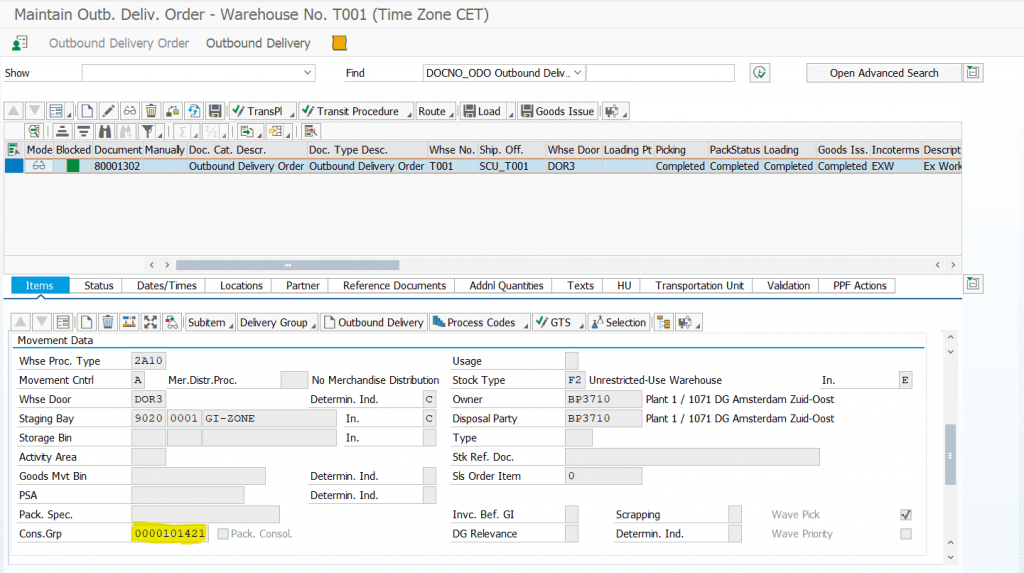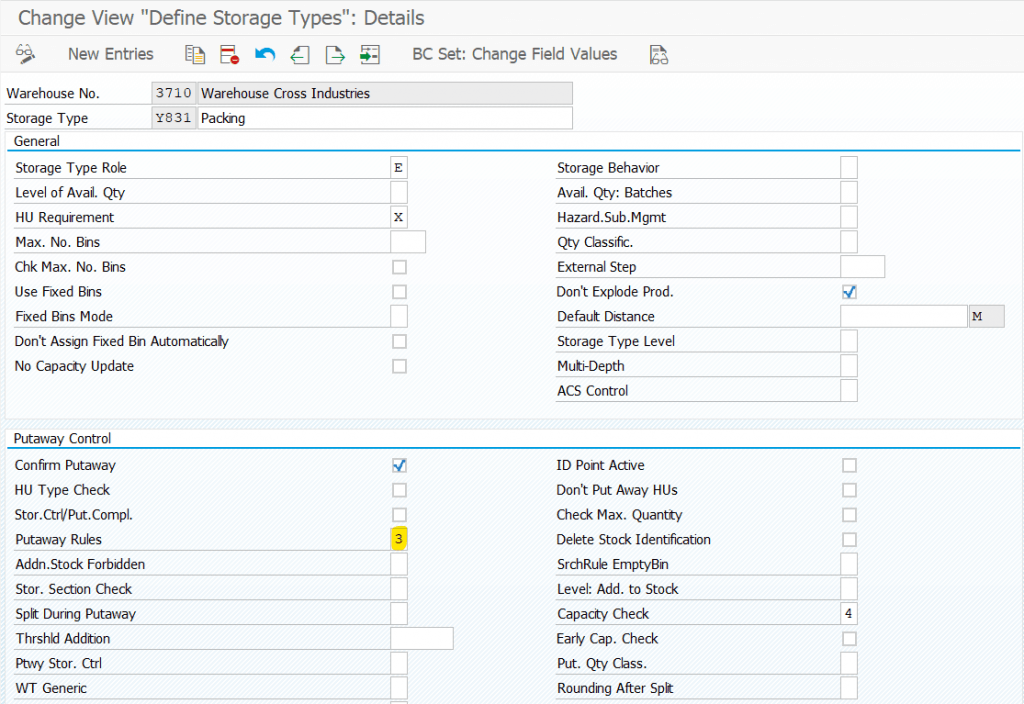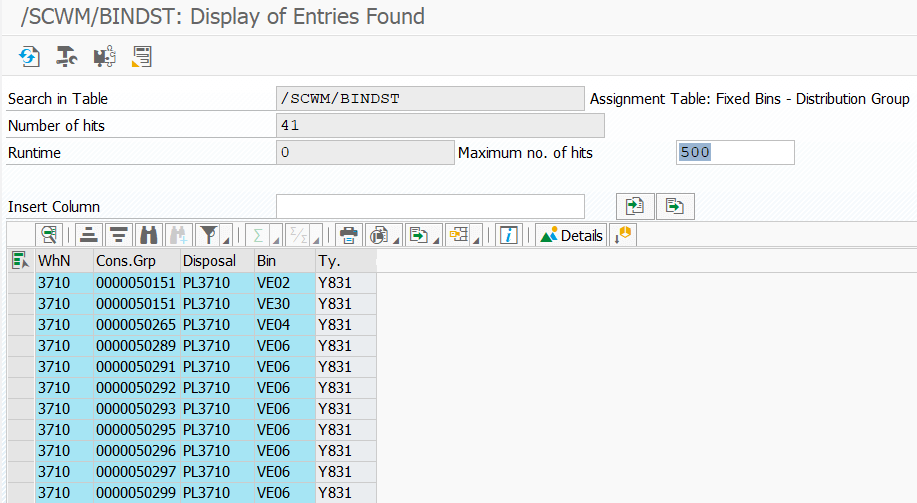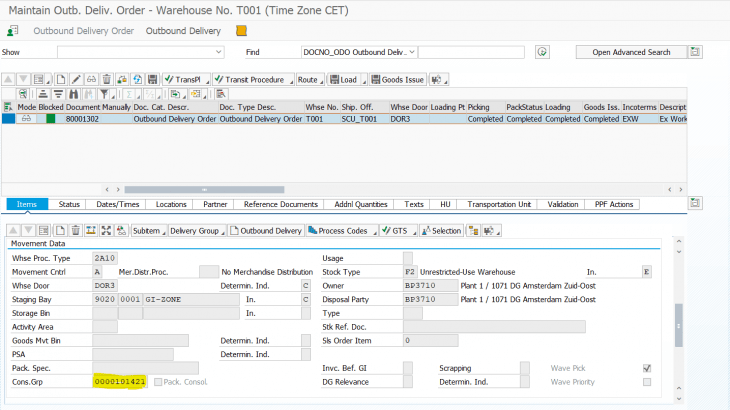Introduction
This blog post contains a deep-dive into the use of Consolidation Groups during the Packing process in SAP EWM. The blog also contains some “lessons learned” and describes solutions for common issues in this area.
Deep-dive into Consolidation Groups during Packing
SAP EWM uses Consolidation Groups in the outbound process to determine which delivery items can or cannot be picked or packed together into a handling unit (HU). This allows you – for example – to combine delivery items for the same customer into one Handling Unit.
First of all, it’s important to understand that each Outbound Delivery Order item is assigned to a Consolidation Group, see screenshot below.

Via tcode /SCWM/DSGR, you can maintain rules which determine how Outbound Delivery Orders are being consolidated. Alternatively, you can use a 1:1 relationship between Outbound Delivery Order and Consolidation Group, essentially keeping delivery items for the same Outbound Delivery Order together.
So, how can you use this Consolidation Group during the Outbound Packing process?
In my example, I have a 1:1 relationship between Outbound Delivery Order and Consolidation Group, meaning that all ODO-items for one ODO will have the same Consolidation Group. I want to make sure that all ODO-items are being sent to the same Packing Work Center, so that they can be packed together into one Shipping-HU.
To accomplish this, I’m using Putaway Rule “3 – Consolidation Group” in the Storage Type which represents the Packing Area. Screenshot:

In this example, I’m using a Pick-Pack-Stage process, where the Packing process is being executed in above mentioned Storage Type. My Outbound Delivery Order is being picked from two different picking areas, using two different Warehouse Orders. During pick-WT creation, SAP EWM will determine the destination Storage Bin for each Warehouse Task.
So, because my Warehouse Tasks are assigned to the same Consolidation Group, SAP EWM will send them to the same Destination Storage Bin, which represents one of my Packing Work Centers. This way, we can make sure that all Products can be packed together in the same shipping-HU.
How does EWM keep track of Consolidation Group – Packing Bin assignments?
In table /SCWM/BINDST, EWM keeps a list of all Consolidation Groups per Packing Bin. A specific Packing Bin can be assigned to many different Consolidation Groups, thus making sure that different Outbound Delivery Orders can be packed at the same Packing Work Center. Screenshot:

In the SAP EWM Best Practice setup, the table entries for a specific Bin are being cleared as soon as the Packing Bin is marked empty. This to make sure that the table is not being cluttered with old, irrelevant Consolidation Groups. The relevant customizng for this functionality can be found in the SPRO > SCM EWM > EWM > Goods Receipt Process > Strategies > Configure Deletion of Fixed Bin Assignments. Screenshot:

Lessons learned
Over the years, I have used this functionality in several different implementations. Although this functionality proves to be useful, there are a few issues/ attention points which must be considered.
Lesson Leared 1 – Table /SCWM/BINDST
Although I have configured the “Delete Consolidation Group assignment if bin is empty” setting for my Packing Work Center, I often notice that this is not working as expected in a real-life environment. There are a two reasons for this:
i. A Packing Bin is only considered empty if there are no Products or HU’s on the Storage Bin, and if there are no open pick-WT’s to this Packing Bin. In real-life this doesn’t happen that often, so it might happen that table /SCWM/BINDST is not cleared from the old Consolidation Groups
ii. Second reason is that even if the Packing bin appears to be empty, the “Empty” flag is not set and the table entries do net get cleared. Most of the time, this is being caused by an inconsistency in the Capacity Check of the Packing Bin. It is therefore highly recommended to perform a daily Capacity Check for the Packing Storage Type via the EWM Check Monitor. Preferably you should schedule this check and fix capacity check issues automatically via reports /SCWM/R_CHM_PRF_RUN and /SCWM/R_CHM_LOG_ACT.
SAP does provide a custom report which allows you to manually clear entries from table /SCWM/BINDTS, but this report must be implemented via SAP Note 1560507 so it’s not available in standard SAP.
Lesson Learned 2 – Consolidation Group number range
if you are using the SAP Best Practice warehouse setup, you will notice that the Consolidation Group number range is rather limited, usually from 50.000 to 99.999. Once the end of the Number Range has been reached, EWM starts over again with number 50.000.
Depending on the number of Outbound Delivery Orders, this means that you’ll eventually have different Outbound Delivery Orders using the same Consolidation Group. This should not be a big issue, but if the above mentioned table /CWM/BINDTS was not cleared for a long time, that Consolidation Group might still be assigned to a Packing Bin. EWM would take this entry into account during pick-WT creation, and would assign the new pick-WT’s to the Packing bin which was used for the previous Outbound Delivery Order which used the same Consolidation Group.
The solution for this is pretty easy: increase the Consolidation Group number range so that a Consolidation Group is not being used multiple times. However, still it’s important to keep table /SCWM/BINDST as clean as possible.
Lesson Learned 3 – Using WT-Generic in combination with Ptwy Rule Consolidation Group
In one of my recent implementations, the client wanted to freely choose their own Packing Bin, so not based using a predefined Packing Bin based on Consolidation Group. To achieve this, I set the WT-Generic setting in the Packing Storage Type to 1 – Storage Type and Storage Section. By doing so, EWM leaves the destination Storage Bin empty, allowing the operator to freely choose a Packing Bin. Screenshot:

Although this setting works fine, it is recommended to also change the Putaway Rule from 3 – Consolidation Group to 4 – General Storage Area. If you don’t do this, it might happen that the system will eventually assign a specific Packing Bin to the WT, as the Consolidation Group Putaway Rule will overrule the WT-Generic setting. Furthermore, you should also change your POSC-customizing and make sure that the Packing Step is not Rules-Based. Screenshot:











